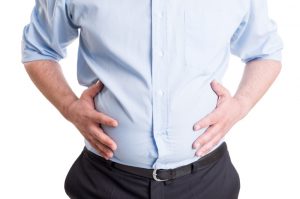 In diabetes patients, gastroparesis and stomach problems may be reduced with dietary changes. Gastroparesis is a progressive disorder causing food to remain in the stomach for prolonged periods of time. The condition is also known as delayed gastric emptying. Gastroparesis often stems from the damage to the nerves running through the digestive tract, so the muscles do not work as they normally would. As a result, the food remains in the stomach undigested.
In diabetes patients, gastroparesis and stomach problems may be reduced with dietary changes. Gastroparesis is a progressive disorder causing food to remain in the stomach for prolonged periods of time. The condition is also known as delayed gastric emptying. Gastroparesis often stems from the damage to the nerves running through the digestive tract, so the muscles do not work as they normally would. As a result, the food remains in the stomach undigested.
Gastroparesis is common in type 2 diabetics, especially in those who have been diagnosed with high, uncontrolled glucose levels for a long time. Having high glucose for an extended period of time can lead to nerve damage resulting in gastroparesis.
Advertisement
Because gastroparesis is progressive, you may not even realize you have the condition, as many of its early symptoms resemble other conditions. Symptoms of gastroparesis include heartburn, nausea, vomiting of undigested food, early fullness after a small meal, weight loss, bloating, loss of appetite, stomach spasms, acid reflux, and glucose levels that are hard to stabilize.
Stomach problems in diabetes patients reduced with dietary changes: Study
Stomach problems related to diabetes can often be reduced through dietary changes. Nearly 35 percent of diabetics suffer from gastroparesis. Researchers at the University of Gothenburg have found that dietary changes were able to help reduce symptoms related to gastroparesis.
The study included 56 diabetics with gastroparesis. The participants were put on a small particle diet and experienced significant relief from their gastroparesis symptoms, compared to those who stuck with a traditional diabetes diet focusing on large particle foods.
Small particle food is food that falls apart, such as a boiled potato when mashed with a fork. Other examples include fish gratin, meat loaf, and thin soups.
Researcher Eva Olausson said, “Eating and the resulting symptoms can be very anxiety producing for gastroparesis patients. The subjects who were put on a small particle diet experienced reduced anxiety levels.”
The study found that small particle food is directly related to stomach emptying. The researchers found that those participants on small particle food had rates of stomach emptying similar to those of healthy individuals. Olausson added, “A small particle diet probably leads to fewer hypoglycemic events, and the events that do occur become easier to manage. This is of tremendous value to the patients.”
On the other hand, large particle food could be used to help diagnose gastroparesis, with the patients swallowing a special marker that can be easily followed through the digestive tract.
Olausson concluded, “These two methods are easily accessible and could help reduce the number of unknown gastroparesis cases, which in turn could help reduce the costs to both patients and society in the form of medical treatments and sick listings.”
Diet for diabetes-related gastroparesis
 Working closely with a nutritionist, doctor, or dietician can help you develop a few diet options based on foods that promote healing. Below are some tips to keep in mind when adjusting your eating style:
Working closely with a nutritionist, doctor, or dietician can help you develop a few diet options based on foods that promote healing. Below are some tips to keep in mind when adjusting your eating style:
- Choose low-fat foods like cottage cheese, low-fat yogurt, egg whites, lean meats, fruits, and vegetables
- Eat your vegetables cooked as opposed to raw
- Follow a low-fiber diet – avoid fibrous foods like broccoli or oranges
- Eat pureed foods or soups to speed up digestion
- Consume plenty of liquids
- Drink homemade ginger tea
- Avoid carbonated beverages and alcohol
- Ensure you chew your food properly
- Eat small frequent meals throughout the day
- Chew your food thoroughly
- Choose foods that are soft and easy to digest
- Avoid drinking water during meals as it dilutes stomach acid, making digestion less effective
- Avoid lying down immediately after eating
- Exercise gently after each meal
- Eat probiotic foods like Greek yogurt or kefir
Consuming aloe vera helps with digestion and bowel regularity.
Apple cider vinegar is known to relieve abdominal pain, heartburn, and bloating, as well as improve digestion.
Coconut oil contains essential fatty chains that can aid in digestion.
Treatment options for diabetes-related gastroparesis
Drugs for gastroparesis include medications to stimulate the stomach muscles and medications to control nausea and vomiting.
In some cases, surgery is required to treat gastroparesis if the patient is unable to tolerate food and liquids. Doctors may recommend a feeding tube to be placed in the small intestine, or a gastric venting tube to help relieve pressure from gastric contents.
Feeding tubes are temporary and are fed through the nose into the small intestine. They are used in severe cases of gastroparesis.
Advertisement
For diabetics specifically, it’s important to control blood sugar levels as much as possible as high glucose can worsen gastroparesis. Blood sugar control can be accomplished by taking insulin more often or changing the type of insulin, taking insulin after meals instead of prior, checking glucose levels more often, and administering insulin when required.
Your doctor will determine the best mode of treatment depending on the severity of your condition.
Sources:
http://www.healthline.com/health/type-2-diabetes/gastroparesis
http://www.gu.se/english/about_the_university/news-calendar/News_detail//dietary-intervention-reduces-stomach-problems-for-diabetes-patients-.cid1182465
https://www.niddk.nih.gov/health-information/health-topics/digestive-diseases/gastroparesis/Pages/facts.aspx#7
//www.belmarrahealth.com/get-rid-gastroparesis-naturally/
